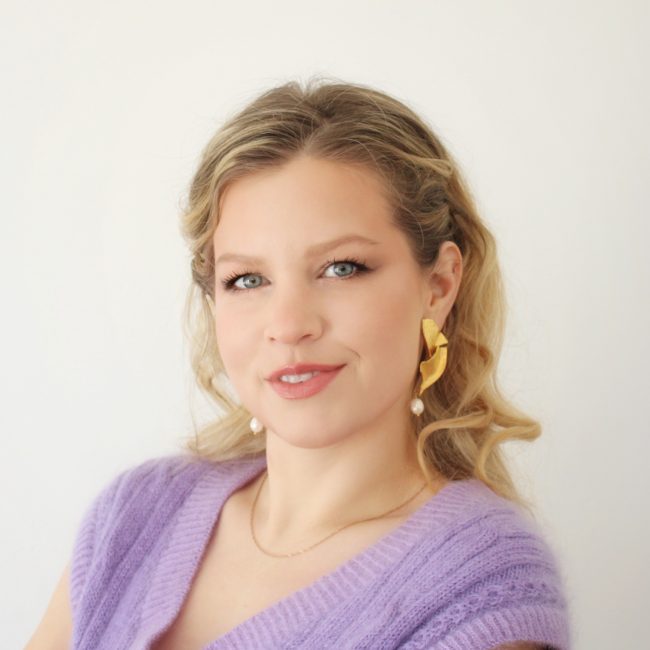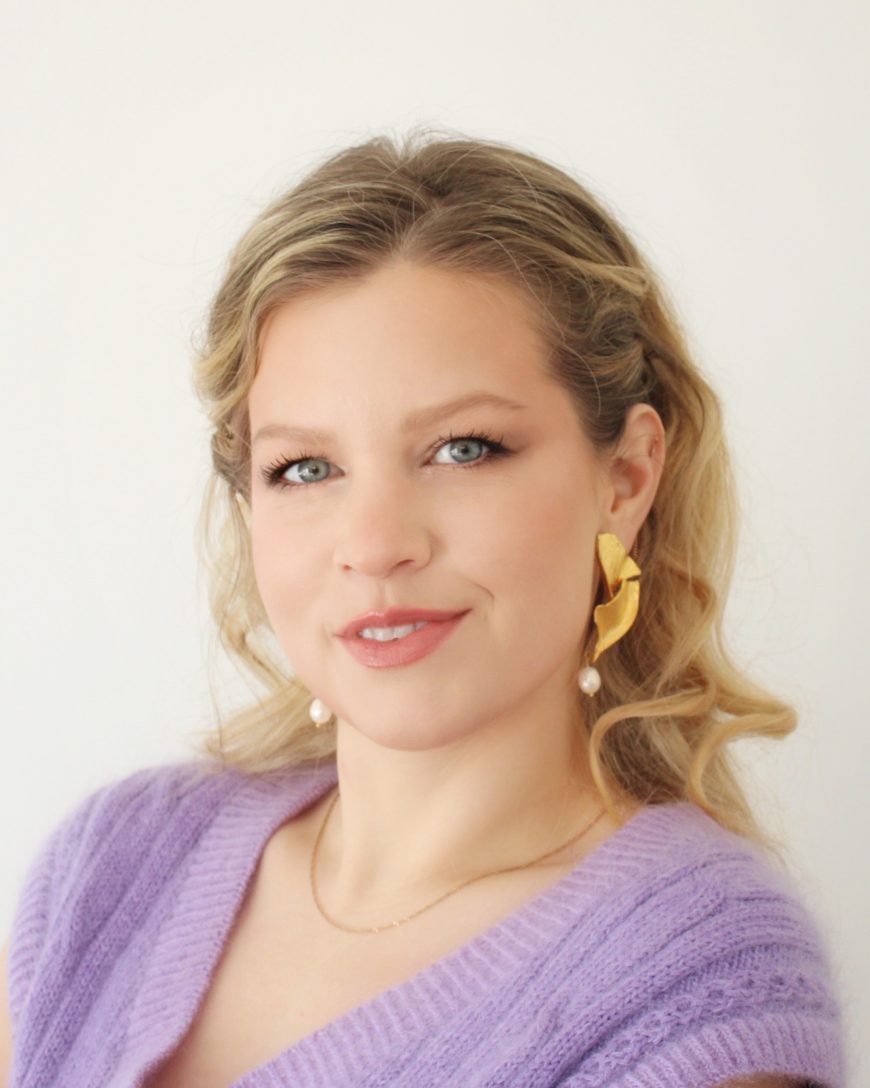Curated conversations with data and AI for social impact leaders on their career journeys
Pathways to Impact is a series of conversations with data for social impact leaders exploring their career journeys. Perry Hewitt, CMPO of data.org, spoke with Tea Tüür, head of product design at WRI‘s Data Lab. She shared how she connected her interest in product development and data inform her work at WRI .
What drew you to work in data and digital product development? How did you find your way to where you are today?
It’s been a long road, and it all started with a brand-new master’s program. The program, Design and Technology Futures, was a collaboration between the Estonian Academy of Arts and IT University TalTech. The program focused on innovation: how innovative ideas are born, how user-centered thinking informs the work, and how businesses succeed or fail and why. By bringing together designers and engineers of various backgrounds and providing some tools and frameworks, the program encouraged ways to create value in the world.
During the program, I developed a deep interest in digital products as well as a newfound understanding of user experience, user interface design, and computer model design. My first job was with a not-for-profit innovation organization called Satellite Applications Catapult, which was growing the UK space industry. The organization focused on both upstream and downstream applications. On the upstream side, we supported NewSpace businesses which built and sent products into space, like satellites, sensors, and instruments. Downstream applications included taking the data from satellites and considering ways it might be used for good. How do we use data and develop software applications that make a difference? Exploring the use of data was what I really loved.
From there, I found my way to the development sector because we had many opportunities to apply these innovative space-based data and applications to sustainable development goals. Projects included anything from looking at climate resilience in small islands to helping improve the quality and productivity of cacao farmers in Colombia, to monitoring oil spills with space-based radar data.
It’s a real strength to be able to be curious, to truly listen to people, and to try to understand where people's underlying needs and motivations lie. At the end of the day, the people who are using our products and technologies need to find them valuable.
Tea Tüür Head of Product Design, Data Lab World Resources Institute (WRI)
In your current role with the World Resources Institute (WRI), what kind of problems are you trying to solve through digital product development?
I serve as the Head of Product Design for the WRI’s Data Lab. The Data Lab offers product design and development resources to program teams across WRI and our partners. We work with subject matter experts in different sectors and we design, test, and scale new solutions made possible by software, digital technologies, and data.
We do work a lot with space-based and satellite data because that enables us to view issues on a global scale. Our best-known products include Global Forest Watch which monitors deforestation, Aqueduct which looks at water risk assessment, and Climate Watch, an open data platform that helps track insights and contributions that different countries have made through national climate plans.
We create these data applications to help policymakers around the world make better decisions and these data applications are useful to practitioners tackling these issues today. For example, the deforestation applications are used by forest rangers and local communities who receive near real-time deforestation alerts. These alerts help them learn where deforestation may be occurring and investigate.
Part of the Pathways to Impact series
Have there been any unexpected blockers to your career entry or progression?
There have been some challenges along the way. Any new role I’ve entered has felt like it’s always been a massive jump. It’s always been terrifying at first, but I really like taking those big risks and jumping into projects, companies, and initiatives that offer learning opportunities. Being a woman in this industry has sometimes posed a challenge, as has adapting to the cultural norms of living in the UK.
The most significant challenge has been the transition to leadership. In my early days, I prized my creativity and liked to develop and design applications myself using custom software. So the transition from being the creator to leading creators has been an adjustment. I’ve learned that I no longer have the time and space to take that hands-on approach to creating tools and products anymore, but instead have found satisfaction in building a team of amazing user researchers, designers, and product strategists who do the job with incredible results.
What community of people or resources bolsters your work?
I’ve always looked for and felt at home in organizations that are very collaborative and don’t work in silos. WRI is a great example of that. We really collaborate with our peers, whether it be other environmental organizations, intergovernmental organizations, environmental agencies and governments, the private sector, etc. The work environment and the culture in our organization make me feel like I don’t need to seek out special communities — I have them around me on a daily basis.
I find that other communities of people who inspire me and really help move my work forward are those with opposing perspectives, or who do completely different things that I don’t get to witness daily.
For example, when we work on big global agriculture data projects, we need to travel in-country and engage with farmers. I recently had a project where we collaborated with the Indian cotton and rice sectors. During our trip, we visited rice farmers, cotton gin facilities, and a broad community of associations who did work on the ground. We listened and learned from their experience, and focused on helping these local organizations build more climate resilience solutions and adaptation thinking in agricultural supply chains. Being able to spend time with communities whose day-to-day is so different from mine is refreshing, and informs our work.
Finally, I’ve participated as a community member in Women in Product, Women in Geospatial.
Which skills beyond data and digital products have been your superpower?
In one word: empathy. It’s a real strength to be able to be curious, to truly listen to people, and to try to understand where people’s underlying needs and motivations lie. At the end of the day, the people who are using our products and technologies need to find them valuable. It’s been beneficial to listen to people and really take in what they’re saying.
When I was at Satellite Applications Catapult, I was once working on a project that was developing this new technology to improve cacao production and quality in Colombia. We had a brilliant team of technologists and data scientists, and I brought in an emphasis on user research. This user research involved meeting with the people in the supply chain who worked locally in Colombia through structured visits to cacao farms, chocolate factories, and storage facilities. This was a valuable experience for the data scientists and developers who were planning to implement the technology. By the end of the trip, our team and all our partners were amazed by how much they learned from the process and how much better they could tailor solutions to these real-world needs and contexts. This user research mentality, driven by and focused on empathy, ensures that the technology meets the actual needs of people who use it. It can be a superpower if we allow it to be.
Our WRI teams practice this, as well, devoting the time to engage with people in person and to really observe how people behave in their natural environment. We take interdisciplinary teams to project locations around the world and schedule time for that in-person collaboration. We find that engagement is essential to facilitate new ideas and more creative, effective solutions.
There’s a lot of opportunity for AI to democratize access to data analysis, even for those who don’t currently understand or know how to interact with complex data.
Tea Tüür Head of Product Design, Data Lab World Resources Institute (WRI)
What advice do you have for someone new to the field who’s interested in doing this work?
Try it! If you feel curious and there’s something about this sector that interests you, put yourself out there and contribute. When I think about when I first entered this sector and the way I felt, how out of my comfort zone I felt, I questioned my ability to add value. I was lucky to have great mentors who helped me overcome this blocker.
I do think that it’s worth emphasizing for anyone entering a new sector that even when there are established norms and practices in place, your fresh perspectives can add value through the knowledge you bring from a different sector with a different skill set. Recognize your unique value add, and don’t be afraid to put it out there.
What’s the next big thing in data or digital product development for social impact that you see and why?
I guess I have to say AI and large language models (LLMs). LLMs will probably continue to be the center of attention and the center of many new solutions that we’re seeing. But I’m hoping that there might be a positive shift in terms of user-centric product creation. Today, we’re still seeing a big gap between technology and humans, which limits the way we interact with technology. There’s a barrier. I do think that large language models and explainable AI can bridge that gap and help make technology more human if we choose to design it that way.
I think there’s a lot of opportunity for AI to democratize access to data analysis, even for those who don’t currently understand or know how to interact with complex data. I am hopeful that we can lower that barrier regardless of the user’s technical expertise.
What’s your don’t miss daily or weekly read?
Several pop into my mind — but one that stands out is the Climate Action Tech newsletter and Slack. They have a lot of accessible explainers for climate-related issues with a clear focus on the opportunity of technology within the climate space.
I also listen to cool podcasts on design and product management, more focused on environmentally sustainable digital design, web sustainability, etc. Examples: Igniting Change by 3 SIDED CUBE, SUX by the Sustainable UX Network.
I also rely on LinkedIn and the network I’ve built there as a good source of new things happening in our space.
About the Author
Chief Strategy Officer Perry Hewitt joined data.org in 2020 with deep experience in both the for-profit and nonprofit sectors. She oversees the global data.org brand and how it connects to partners and funders around the world.
Read moreSeries
Pathways to Impact
This data.org series interviews leaders in Data Science for Social Impact with a lens of how they got there, as well as the skills and experiences that have fueled their career progression.


